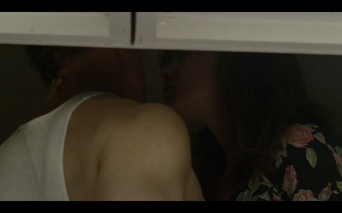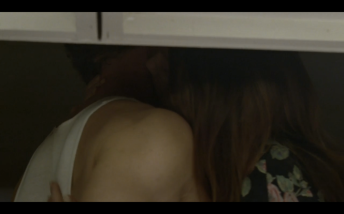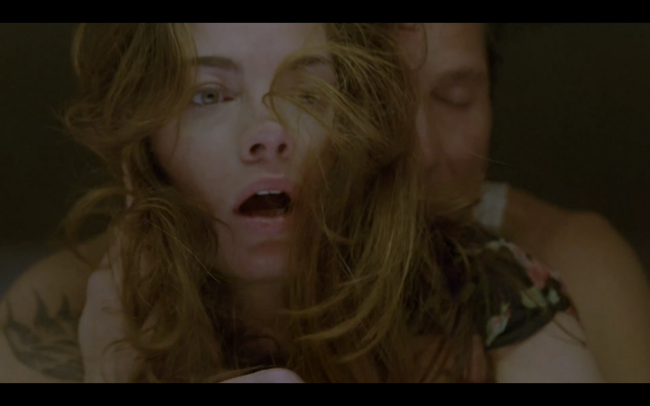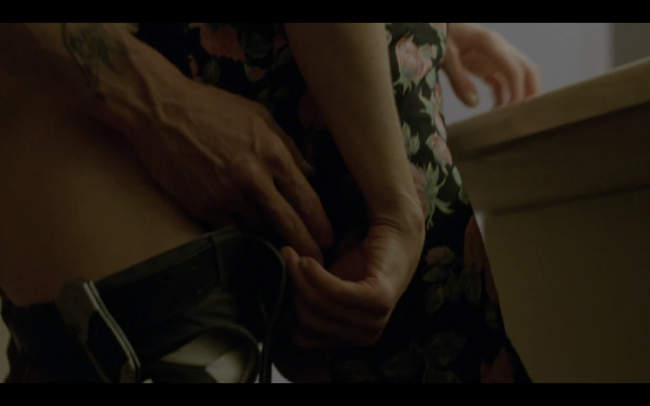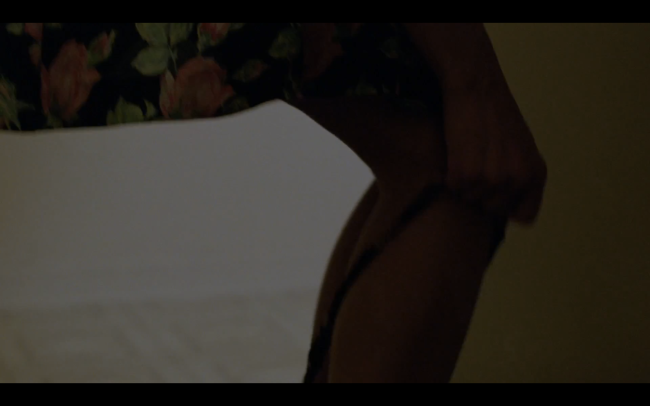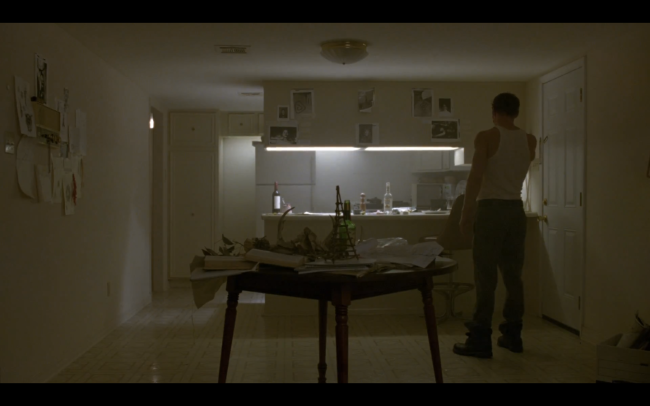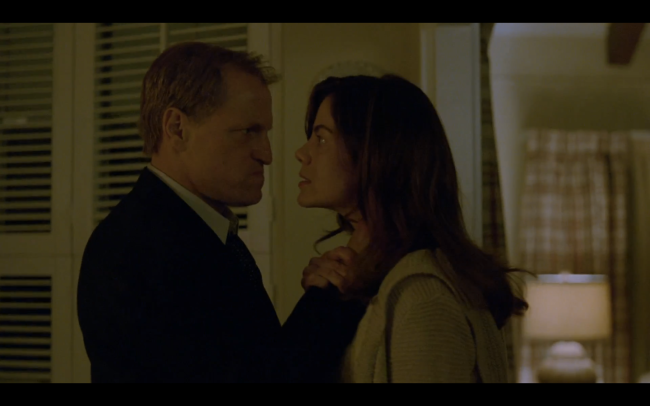Early in True Detective’s run, some were rankled by the sex scene in episode two between Hart and his mistress, in which the camera luxuriated in and leered at actress Alexandra Daddario’s naked body. I wasn’t bothered by the scene because, indulgent as the focus on Ms. Daddario’s assets might have seemed, it effectively replicated Marty Hart’s gaze and thus felt understandable. But it’s true, as Emily Nussbaum wrote in The New Yorker after last Sunday’s episode, that as the show has gone on, its women have not been shaded in much. True Detective’s world is populated by, per Nussbaum, “slack-jawed teen prostitutes,” “strippers gyrating in the background of police work,” “the designated put-upon wifely character” and “the occasional cameo hussy.” These women seem to exist in the show’s world simply to deepen our understanding of the two main characters, which is what made the most recent episode so strange for me.
SPOILERS. In episode six, Maggie Hart (Michelle Monaghan) finds out her husband is, once again, cheating on her. In an effort to enrage Marty and send him out of the house, Maggie seduces his partner, Rust, then tells Rust what her plan was and later tells Marty what she has done, effectively blowing up both their home life and Marty and Rust’s professional relationship.
Due to the show’s framing device, viewers knew that Rust and Hart would split as partners in 2002, and to the observant viewer the reason for the impending split was easy to predict (the show’s first five episodes were peppered with Maggie/Rust scenes that crackled with chemistry), so I was not the least bit surprised when Maggie knocked on Rust’s door in the last episode.
The plot wasn’t what threw me; it was the perspective. The sex scene, as Willa Paskin notes in her Slate piece, positions Maggie as the one with agency. “Rust and Marty both became, however briefly, pawns in her story,” Paskin writes. Indeed, just before Maggie arrives Rust is in his desolate apartment trying to puzzle together the Yellow King mystery. He hears a knock at the door, and rather than track Rust as he finds out who it is, the camera cuts outside so that the viewer sees Maggie looking distressed in front of Rust’s apartment.
By cutting to Maggie before Rust opens the door, the show is placing us outside of his point of view and sending us a message: Rust is not the protagonist in this scene. Next, Maggie initiates contact.
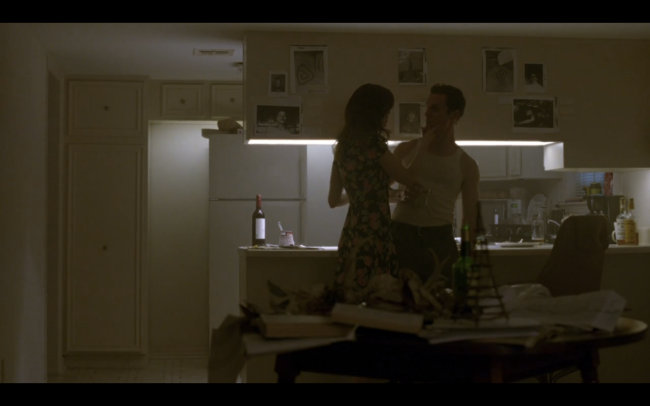
And then we get a unique shot of the couple framed through the cabinets and counter in Rust’s kitchen. Rust is still hesitant, and in this shot we can only see Maggie’s face as she tries to get him to capitulate. The shot further emphasizes Maggie’s place in the scene’s power dynamic.
After Rust is finished, the camera lingers on Maggie’s face, asking the viewer to contemplate these events from her point of view.
And in a particularly great shot, we cut to a close-up of Maggie’s hand delicately pushing Rust away so that she can put her panties back on.
From start to finish, Maggie is in control. The scene’s writing and direction emphasize her experience of the event at hand, an extreme change of perspective since until now the entire show has been filtered through Rust and Hart’s points of view. The change doesn’t last long, though. A beat later, we fully shift to Rust’s reaction to Maggie’s betrayal. The scene ends with a shot of Rust alone in his apartment, stricken and solitary.
Suddenly, the scene seems meant to illuminate Rust for the audience. His reaction to Maggie’s behavior—it is presented as Maggie’s behavior—shows him to be a “good man,” a principled man who has had a lapse in judgement because he is incredibly lonely and vulnerable. Similarly, the next 2002 scene is Maggie’s confession. She tells Hart what she has done, and the moment is meant to further clarify that Hart is a hothead with anger and control issues.
In the end, Hart and Rust brawl in the police station parking lot and ultimately break up. The story is emphatically not of Maggie’s liberation from her marriage, and I don’t think it should be. But why frame the sex scene from Maggie’s perspective instead of Rust’s, when True Detective hasn’t made any other attempts to consider its female characters’ inner lives?
Rust has increasingly been positioned as the hero of True Detective. He may be deeply flawed, but he is also the only character who seems to really want to solve the Yellow King mystery and save the women and children the killer is terrorizing. The show asks us to root for Rust, particularly in the last episode, which featured Rust in multiple face-offs—with our presumed Bad Guy, the hot mess that is Marty Hart, and The Man in the form of his lazy or willfully ignorant superiors at the police station—in which he was in the right. So is it a coincidence that we switch perspectives right when Rust could, by sleeping with his partner’s wife, become the bad guy? By placing Maggie as agent, the viewer is allowed to let Rust off the hook and blame Maggie, who is once again reduced to a stereotype: the sexually manipulative woman.

